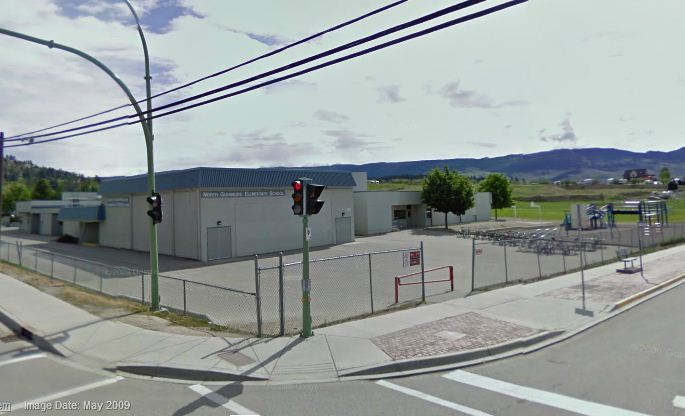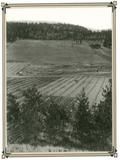Click 'Directions' and put in your address for route options
View Larger MapSCHOOL HISTORY
North Glenmore Elementary School opened in 1964 as a two-room school. In 1967, two
rooms, plus a half-sized gym and library were added. In 1993, three classrooms, a computer
lab, new office spaces, a new library and a full-sized gymnasium were also added. In 2001, a
final two-story addition, including an elevator, four classrooms, support staff offices, a
conference room and book storage room, were completed. The thirteen portables that had
been on-site until that time were removed in August of 2001, and all students were housed
within the building for the first time in many years.
Big changes in the school's population, due to the subdivision of numerous farms and
orchards in the area, necessitated construction over the years. Between September 1989 and
1993, the population grew from 190 students to 424 students, despite the reassignment of the
Grade Seven students to a middle school in 1992. The population peaked at 648 students by
1999, and in 2000, a boundary change meant 250 students were reassigned to the new
Watson Road Elementary School a few kilometers down the road.
The current population of approximately 470 students is housed in a well-appointed building that is centrally located. Our facility is spacious, with a computer lab, excellent library, a large gymnasium, a multi-purpose room and 2 modern modular classrooms. It is a school with a reputation for respectful students, strong family support and an effective staff. The area is desirable and housing sales are quick. Families frequently upgrade in the same area so their children can continue to attend North Glenmore Elementary.
HISTORY OF GLENMORE AREA
The Okanagan Valley's semi-arid climate forced early settlers to locate near rivers and lakes. The site of Mill Creek was the deciding factor in the choice of Dry Valley (Glenmore) development. Starting in 1885, Frederick Brent was one of the first settlers to receive a 'crown grant' from the provincial government. Boundaries of each grant followed quarter section lines, regardless of topography, and each applicant was granted one or more quarter sections. With an average annual rainfall of only 12 inches Glenmore homesteaders used their land for cattle ranching, logging and subsistence farming.
From the turn of the century to about 1905, real estate speculation converged in the Central Okanagan intent on buying undeveloped land in the Mill Creek and Glenmore valleys, and the Mission and East Kelowna areas. Whole sections were bought, subdivided and sold by these powerful land development companies.
In 1907, several local businessmen formed Central Okanagan Lands, Ltd. to buy and develop virtually all lands within Glenmore and parts of Mill Creek Valley and Rutland. Financed by a half-million dollar Dominion Trust co. bond issue of $300,000, of which was sold in Britain. Central Okanagan Lands was subdivided into orchard-sized parcels and sold to wealthy eastern Canadians who thought 'money grew on trees' in the Okanagan. Purchasers paid from $250 - $400 per acre for land they could farm themselves or hire Central Okanagan Lands to clear, plant and operate.


